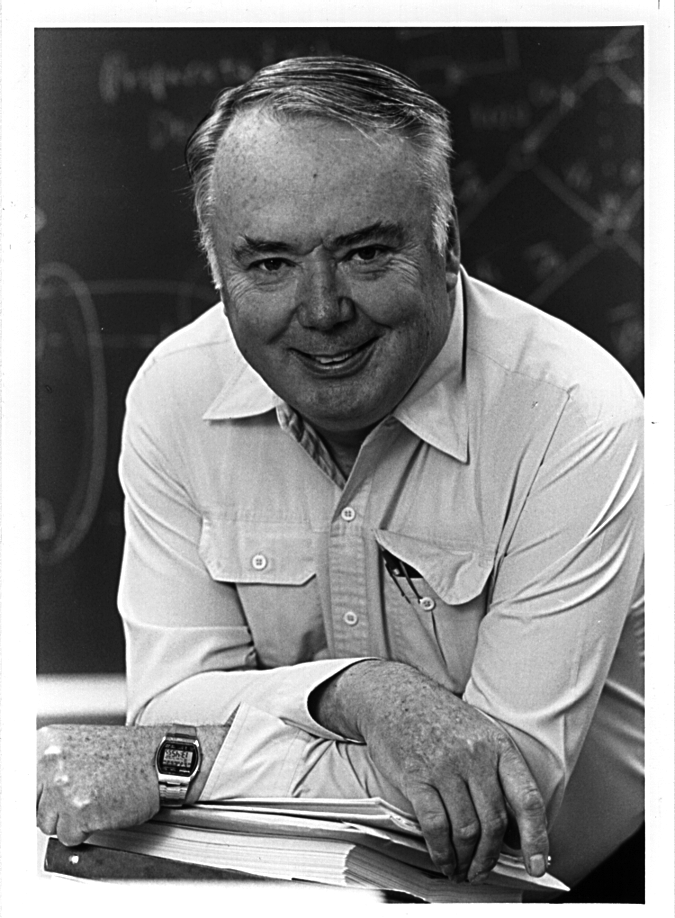
Charles Molnar
Encyclopedia

Minicomputer
A minicomputer is a class of multi-user computers that lies in the middle range of the computing spectrum, in between the largest multi-user systems and the smallest single-user systems...
s, the LINC
LINC
The LINC was a 12-bit, 2048-word computer. The LINC can be considered the first minicomputer and a forerunner to the personal computer....
(Laboratory Instrument Computer), while a graduate student at the Massachusetts Institute of Technology (MIT) in 1962. His collaborator was Wesley A. Clark
Wesley A. Clark
Wesley Allison Clark is a computer scientist and one of the main participants, along with Charles Molnar, in the creation of the LINC laboratory computer, which was the first mini-computer and shares with a number of other computers the claim to be the inspiration for the personal computer.Clark...
.
The LINC originated decades before the advent of the personal computer. Its development was the result of a National Institutes of Health
National Institutes of Health
The National Institutes of Health are an agency of the United States Department of Health and Human Services and are the primary agency of the United States government responsible for biomedical and health-related research. Its science and engineering counterpart is the National Science Foundation...
(NIH) program that placed 20 copies of an early LINC prototype in selected biomedical research laboratories nationwide. Later, the LINC was produced in greater numbers by Digital Equipment Corp. and other computer manufacturers. Later he was on the faculty of Washington University in St. Louis
Washington University in St. Louis
Washington University in St. Louis is a private research university located in suburban St. Louis, Missouri. Founded in 1853, and named for George Washington, the university has students and faculty from all fifty U.S. states and more than 110 nations...
.
Charlie Molnar was also well known as a pioneer in the modeling of the auditory system
Auditory system
The auditory system is the sensory system for the sense of hearing.- Outer ear :The folds of cartilage surrounding the ear canal are called the pinna...
, especially numerical models of the function of the cochlea
Cochlea
The cochlea is the auditory portion of the inner ear. It is a spiral-shaped cavity in the bony labyrinth, making 2.5 turns around its axis, the modiolus....
(the inner ear).
When he died in 1996, he was working at Sun Microsystems
Sun Microsystems
Sun Microsystems, Inc. was a company that sold :computers, computer components, :computer software, and :information technology services. Sun was founded on February 24, 1982...
on asynchronous circuit
Asynchronous circuit
An asynchronous circuit is a circuit in which the parts are largely autonomous. They are not governed by a clock circuit or global clock signal, but instead need only wait for the signals that indicate completion of instructions and operations. These signals are specified by simple data transfer...
s with Ivan Sutherland
Ivan Sutherland
Ivan Edward Sutherland is an American computer scientist and Internet pioneer. He received the Turing Award from the Association for Computing Machinery in 1988 for the invention of Sketchpad, an early predecessor to the sort of graphical user interface that has become ubiquitous in personal...
.
Molnar received a bachelor's degree (1956) and a master's degree (1957) in electrical engineering from Rutgers University
Rutgers University
Rutgers, The State University of New Jersey , is the largest institution for higher education in New Jersey, United States. It was originally chartered as Queen's College in 1766. It is the eighth-oldest college in the United States and one of the nine Colonial colleges founded before the American...
, where he was a member of the Cap and Skull
Cap and Skull
Cap and Skull is a senior-year coeducational honors society at Rutgers University, founded on January 18, 1900.Admission to Cap and Skull is dependent upon excellence in academics, athletics, the arts, and public service. Leadership as well as character are also considered crucial factors for...
Society, and received a doctoral degree (1966) from MIT in electrical engineering.
Important publications
Molnar's significant publications included the following:- Clark, W.A. and C.E. Molnar, 1964, "The LINC," Anal. New York Academy of Sciences, Vol 115, pp. 653–658.
- Clark, W.A. and C.E. Molnar, 1965, "A Description of the LINC," Computers in Biomedical Research, Vol II, B.D. Waxman and R. Stacey, eds, Academic Press, New York, NY.
- Model for the Convergence of Inputs Upon Neurons in the Cochlear Nucleus, D.Sc. Thesis, MIT, 1966.
- Chaney, T.J. and C.E. Molnar, "Anomalous Behavior of Synchronizer and Arbiter Circuits," IEEE Trans. on Computers, Vol. C-22, No. 4, pp. 421–422, Apr. 1973.
- Kim, D.O., C.E. Molnar, and R. R. Pfeiffer, 1973, "A system of nonlinear differential equations modeling basilar-membrane motion," J. Acoust. Soc. Am. 54(6):1517–29 Dec. 1973.
- Clark, W.A. and C.E. Molnar, 1974, "Macromodular Computer Systems," Computers in Biomedical Research, pp. 45–85, Vol IV, B.D. Waxman and R. Stacey, eds, Academic Press, New York, NY.
- Kim, D.O. and C.E. Molnar: Cochlear mechanics: Measurements and models, in The Nervous System, Vol. 3, Human Communication and Its Disorders, edited by DB Tower (Raven, New York) 1975; pp 57–68
- Sproull, R.F., I.E. Sutherland, and C.E. Molnar, 1994, "The Counterflow Pipeline Architecture," IEEE Design and Test of Computers, Vol. 11, no.3, pp. 44–59.

